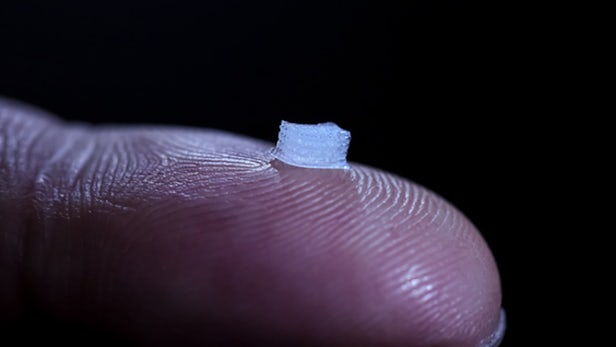LOS ANGELES: Scientists have used rapid 3D-printing technologies to create a spinal cord, then successfully implanted that scaffolding, loaded with neural stem cells, into sites of severe spinal injury in rats.
The implants, described in the journal Nature Medicine, are intended to promote nerve growth across spinal cord injuries, restoring connections and lost function.
In rat models, the scaffolds supported tissue regrowth, stem cell survival and expansion of neural stem cell axons out of the scaffolding and into the host spinal cord.
“In recent years and papers, we’ve progressively moved closer to the goal of abundant, long-distance regeneration of injured axons in spinal cord injury, which is fundamental to any true restoration of physical function,” said Mark Tuszynski from the University of California (UC) San Diego in the US.
Axons are the long, threadlike extensions on nerve cells that reach out to connect to other cells.
“The new work puts us even closer to real thing because the 3D scaffolding recapitulates the slender, bundled arrays of axons in the spinal cord. It helps organise regenerating axons to replicate the anatomy of the pre-injured spinal cord,” said Kobi Koffler from UC San Diego.
The researchers used rapid 3D printing technology to create a scaffold that mimics central nervous system structures.
“Like a bridge, it aligns regenerating axons from one end of the spinal cord injury to the other. Axons by themselves can diffuse and regrow in any direction, but the scaffold keeps axons in order, guiding them to grow in the right direction to complete the spinal cord connection,” Chen said.
The implants contain dozens of tiny, 200-micrometre-wide channels (twice the width of a human hair) that guide neural stem cell and axon growth along the length of the spinal cord injury.
The printing technology used by the team produces two-millimetre-sized implants in 1.6 seconds. Traditional nozzle printers take several hours to produce much simpler structures.
The process is scalable to human spinal cord sizes. As proof of concept, researchers printed four-centimetre-sized implants modelled from MRI scans of actual human spinal cord injuries. These were printed within 10 minutes.
“This shows the flexibility of our 3D printing technology. We can quickly print out an implant that’s just right to match the injured site of the host spinal cord regardless of the size and shape,” said Wei Zhu from UC San Diego.
Researchers grafted the two-millimetre implants, loaded with neural stem cells, into sites of severe spinal cord injury in rats.
After a few months, new spinal cord tissue had regrown completely across the injury and connected the severed ends of the host spinal cord. Treated rats regained significant functional motor improvement in their hind legs.
“This marks another key step towards conducting clinical trials to repair spinal cord injuries in people,” Koffler said.
“The scaffolding provides a stable, physical structure that supports consistent engraftment and survival of neural stem cells. It seems to shield grafted stem cells from the often toxic, inflammatory environment of a spinal cord injury and helps guide axons through the lesion site completely,” said Koffler.
The circulatory systems of the treated rats had penetrated inside the implants to form functioning networks of blood vessels, which helped the neural stem cells survive. (AGENCIES)


